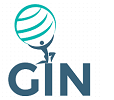Any kind of external wound damages the skin to some extent. Some are mere scratches, while others are so bad that they damage the skin, the muscle underneath and the blood vessels and nerves that intertwine within, as well as the bones, ligaments, and cartilage. Among the most-common causes of severe skin damage are burns, major accidents, violence, contact with harsh chemicals, and a number of diseases, such as skin cancer, necrotizing fasciitis (flesh-eating disease), and ulcers.
Hence, with the increasing consciousness of people on their looks, burn units and cosmetic centers are witnessing a rapid increase in the footfall of people wanting to have ‘perfect’ skin. Therefore, a number of replacements and substitutes for one’s original skin have made their way into the medical sector, the most-widely used of which are detailed below.
Allografts
Allografts have been used for ages in skin, heart, cornea, bone, bone marrow, liver, and kidney transplantation. Skin allografts are tissues taken from a donor of the same species; however, variations in the genetic component are not given much heed. They are used as skin substitutes to cover major wounds with deep burns, which are a major issue in developing countries, which often have poor fire safety standards.
 |
| Get the sample pages of this report: https://bit.ly/3oCqkVR |
Xenografts
On the other hand, a xenograft is defined as tissue or organ derived from species that is different from that of the recipient. It is used to temporarily repair badly burned areas or large areas of the skin damaged due to injury. A commonly used xenograft on the skin for partial-thickness (second-degree) burns is EZ Derm. It facilitates the coverage of large affected areas exposed to external contaminants and minimizes cell death and protein loss.
Autografts
Moreover, cultured epithelial autografts, or CEAs, can provide support in closing wounds, but carry the risk of the slow deposition of the basement membrane proteins, thus causing blistering and graft loss. The rete ridges and dermal papillae existing at the dermal–epidermal junction (DEJ) are crucial for skin homeostasis and epidermal adhesion.
Thus, encouraging interdigitated DEJ development may result in the improvement of the deposition of the basement membrane protein and facilitates improved interlocking between the two layers of the skin. CEAs grafted in combination with ridged templates reflect the formation of rete ridges in under two weeks and improve the epidermal thickness, stemness, and proliferation compared to templates with a flat DEJ.
Moreover, cultured epithelial autografts are used as an adjunct to conventional split-thickness autografts in patients with very large burns, but they may cause blistering and result in reduced engraftment. Rete ridge formation and basement membrane deposition are enhanced by CEAs’ combination with micropatterned, cell-seeded dermal templates. It may lead to improved treatment and survival rates in patients with extreme burn cases.
Acellular Dermal Matrix (ADM)
An ADM is a type of surgical mesh developed from human skin or animal skin by removing the cells and leaving support structure in place. The use of ADM in certain types of surgeries, most-commonly off-label breast reconstruction implants. ADM is essentially used to extend the pectoral muscle so that it covers the whole of the implant.
Synthetic Skin
Synthetic skin is a collagen scaffold used for inducing skin regeneration in mammals. It is devised as a fabric dressing with thickness and elasticity that can match specific areas of the body and absorb the tissue of the skin after its complete healing. The blend of two synthetic materials is used to develop nanometer-sized fibers, which are a thousand times thinner than hair.
Thus, with technological advancements in skincare, cosmetic surgery, and the trauma fields, along with the growing awareness on appearance, the usage of skin replacements and substitutes continues to burgeon.






.jpg)








.png)












